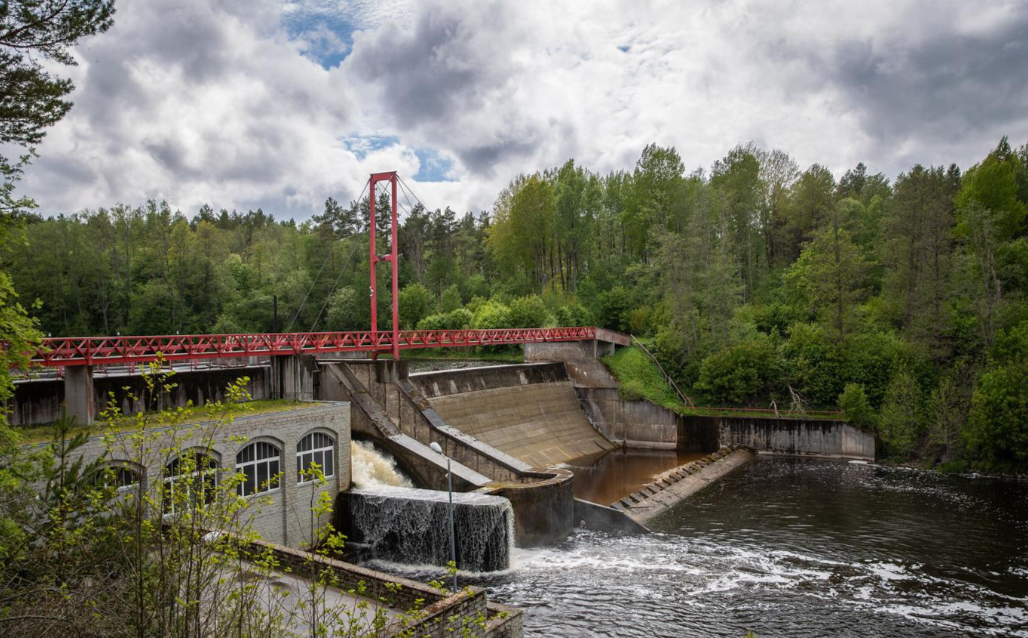Estonian Supreme Court issues historic ruling expected to accelerate the Dam Removal Movement in Estonia.
On January 15, 2024, the Supreme Court of Estonia made a historic ruling, setting a precedent for dam removals. The ruling stated that the Ministry of Culture cannot oblige the Ministry of Environment to issue a water permit for a dam, as the Ministry of Environment is the competent authority for balancing heritage and environmental interests. Heritage interests can be considered to the extent permitted by EU environmental law, including the derogation clause in the Habitats Directive (Article 6(4)).
The Jägala River, designated as a Natura area, is obstructed by the Linnamäe Hydroelectric Power Plant (HEP), harming habitats for species such as the river lamprey, European bullhead, Atlantic salmon, thick-shelled river mussel, and otter. Despite its poor condition due to the dam obstructing fish migration, the HEP continues to operate with temporary permits, prompting legal action by environmental groups like Jägala Kalateed NGO.
Efforts to restore the river aim to revive fish stocks, enhance recreational value, and benefit commercial and sport fisheries. However, clashes between cultural heritage protection and environmental concerns have complicated the issue. While the Ministry of Culture initially protected the dam and dam lake under heritage status with two separate directives, legal battles have ensued to prioritize nature.
We asked some questions to Tanel Ader, Senior officer at the Estonian Ministry of Agriculture, and Jägala Kalateed NGO to know more about this case.

Why is it important to restore Jägala River?
The Jägala Kalateed NGO embarked on a mission to restore the Jägala River Natura area, driven by the area’s fisheries potential and the alarming decline in fish stocks. The restoration of the Jägala River would bring as many salmon to the region as the quota for salmon fishing in the Gulf of Finland. Restoring the river would also increase its recreational value, as it would become a hotspot for visitors, anglers, and water enthusiasts in general.
”“Recreational and commercial fishermen will benefit the most as they make up about 10% of the whole Estonian population.”
Tanel AderSenior officer at the Estonian Ministry of Agriculture
What is the outcome of the legal process for the restoration of the Jägala River?
The Ministry of Culture and the Ministry of Environment in Estonia were unable to agree on how to deal with the issue of ageing dams. On the one hand, dams are a part of cultural heritage but on the other hand dams are a threat to rivers. When these interests are in conflict, the ministries are obliged to find solutions via negotiations.
On January 15, 2024, after more than two years of petitioning and legal processes, the Supreme Court announced its final ruling: The Ministry of Culture cannot oblige the Ministry of Environment to grant or nullify water permits. If cultural and environmental interests collide, the supreme power is held by environmental rules (from Nature Directive 6.4). Therefore, the ultimate verdict is to be made by the Ministry of Environment, not the Ministry of Culture. This ruling is a historic achievement for the dam removal movement in Estonia and it sets the precedent for other EU Member States to solve environmental and cultural conflicts in favour of nature.
Thanks to the Supreme Court ruling, on April 8, 2024, the Estonian Environmental Board decided to officially cancel the water permit to the Linnamäe HEP, the largest hydropower dam in Estonia, for the benefit of salmonids. This announcement is going to open the doors to the biggest dam removal in Estonia.
What were the arguments in favour and against the dam removal?
The area surrounding the dam removal site is an old village with ancient ruins and a castle. The Cultural Ministry argues that the dam lake helps to preserve the village’s scenic view and reduce erosion to safeguard the cultural soil layer.
On the other hand, fish migration is impeded as the dam’s height precludes any fish passage. The hydropower plant is not profitable, with the expenses associated with habitat and fish stock restoration outweighing revenue generation. Additionally, the dam lake has various adverse effects, including decreased oxygen levels and elevated water temperatures, which also impact downstream river conditions.
What are the necessary steps to ensure an informed public discourse surrounding hydropower and dam removals?
In Estonia, the topic of removing dams has mainly been covered in the media from the perspective of electricity producers and the Environmental Board.
”„Articles related to nature conservation do not easily make it into the mainstream media; they are published in media outlets related to nature. We have not even been given the opportunity to respond when the mainstream media has published pro-dam viewpoints.”
Jägala Kalateed NGO
A partial perspective on the opinions regarding dam removals may lead policymakers to believe that Estonian society supports dams. However, this is not accurate. Today, Estonians are more informed, and there is a growing preference for river restoration among the population.
In general, each article, blog, social media post, newsletter, or court case has a significant impact. The key is to properly communicate about hydropower threats and dam removal successes.
”“Tons of new information is published daily, and effective dissemination is important. However, this news is shared on a limited scale, lacking enduring impact.”
Tanel AderSenior officer at the Estonian Ministry of Agriculture
For this reason, mechanisms ensuring the continual dissemination of such information, such as integration into educational curricula and books, are crucial for mainstreaming the dam removal movement.
”“Recreational and commercial fishermen will benefit the most as they make up about 10% of the whole Estonian population.”
Tanel AderSenior officer at the Estonian Ministry of Agriculture




Join the discussion One Comment